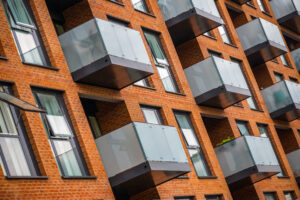
When purchasing a property, there are two types of tenure: Freehold and Leasehold. In this article we will take a look at Leasehold tenures in more detail, but will, for the sake of context, explain what freehold is.

What are the reasons for a Leasehold?
Leasehold tenures deal with a lot of complex issues such as flats where there are multiple owners in one building, on one plot of land and communal areas added into the mix. In these situations, it is much simpler to have leasehold tenures as the land, the communal areas and the building fabric are all the responsibility of the freeholder.
Another reason might be that the freeholder wants to keep their interest in the land and the property for the future. By having a leasehold tenure on the property, they are assured that interest in the future.
How does a Leasehold work?
Leasehold means that you just have a lease from the freeholder (sometimes called the landlord) to use the home for a number of years. This can be 99 years up to 999 years. This length of the lease can be shorter and we will cover this below. Leaseholds are much more common in flats but are certainly not unheard of with houses.
- A leaseholder has a contract with the freeholder, which sets down the legal rights and responsibilities of either side.
- The freeholder will normally be responsible for maintaining the common parts of the building, such as the entrance hall and staircase, as well as the exterior walls and roof.
- There is a right to manage process where leaseholders can ask to take over the management of the building and communal areas (in the case of flats)
- As a leaseholder, you will pay maintenance fees, annual service charges and a share of the building’s insurance.
- The leaseholder will also have to pay ground rent to the freeholder too
- Because the property is only sold for a period of time, leaseholders will typically need permission from the freeholder to carry out any significant alterations to the property.
- There may be other leasehold restrictions, such as not keeping pets or subletting.
If leaseholders don’t fulfil the terms of the lease – for example, by not paying the fees – then the lease can become forfeit.
Advantages of a Leasehold Property
Typically, a leasehold property’s purchase price is less than that of an equivalent freehold, making them more affordable. The freeholder, or landlord, is usually responsible for maintaining the structure of the building (check the lease though to make sure this is the case) and the freeholder is also responsible for the upkeep of communal areas if there are any.
Disadvantages of a Leasehold
- There may be restrictions on how you can use the property (e.g., keeping pets, smoking indoors, etc.)
- You may need to obtain permission before making changes to the property
- The value of the property is likely to decrease as the lease gets shorter
- You may be liable to pay ground rent, service charges, and/or admin fees
- The Freehold can be sold on to other people (although leaseholders should get a right of first refusal)
- It may be more difficult to sell the property in the future, particularly if there is not long remaining on the lease
Can I buy the Freehold?
Yes, is the simple answer, subject to the freeholder being willing to sell it. The leaseholder will have had to have owned the leasehold for at least 2 years before they can buy the freehold. Here is a great guide from the Home Owners Alliance on the steps to take and considerations for buying a freehold.
Leaseholds are more common in flats than houses simply due to the multiple properties within a single building. They do have their advantages and disadvantages. The key thing to understand is the implications of a leasehold, understanding the tenure of any property that you are looking to buy and taking the right advice to make sure you make the right choice for you.



